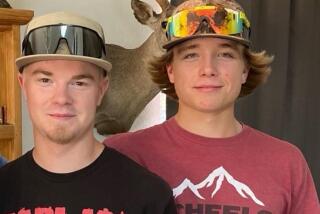Wildlife officers uncover ‘largest raptor poaching case in known California history’
A Northern California man shot more than 130 hawks and other legally protected birds of prey on his land, leaving the carcasses to pile up at the foot of trees and telephone poles, wildlife officials said Wednesday.
California Department of Fish and Wildlife managers believe the discovery near the rural town of Standish in Lassen County, on the border with Nevada, marks the largest poaching case involving raptors on record for the state, spokesman Capt. Patrick Foy said.
Wildlife officers alerted by an anonymous tip from someone who reported watching a man shooting down a hawk “just started finding one bird after the next,” Foy said.
“A search of the 80-acre property led to the discovery of an extraordinary number of raptor carcasses, other dead birds and wildlife and spent rifle casings indicating more than 140 potential state and/or federal violations,” the CDFW said in a news release.
Officers also located two dead bobcats, one taxidermied mountain lion and other nongame birds, all suspected to be unlawfully taken.
Wildlife officers don’t know what motivated the shootings, Foy said.
Authorities booked property owner Richard Parker, 67, into the Lassen County jail on charges including taking of birds of prey and taking of migratory nongame birds protected by the federal Migratory Bird Treaty Act. The website of the county jail did not show whether Parker had a lawyer to comment on the charges.
Birds of prey are broadly valued by farmers and others for helping keep down rodent populations. State law bars killing them.
All of the birds appear to have been shot, Foy said. Most were red-tailed hawks, but they also included an owl, at least one magpie songbird, and North America’s largest hawk, the migratory ferruginous hawk.
David Bess, chief of law enforcement for the state wildlife agency, called the scale of the raptor killings “unprecedented” for California.
It could take years for the local raptor population to recover, Bass said in a statement.
More to Read
Start your day right
Sign up for Essential California for news, features and recommendations from the L.A. Times and beyond in your inbox six days a week.
You may occasionally receive promotional content from the Los Angeles Times.





